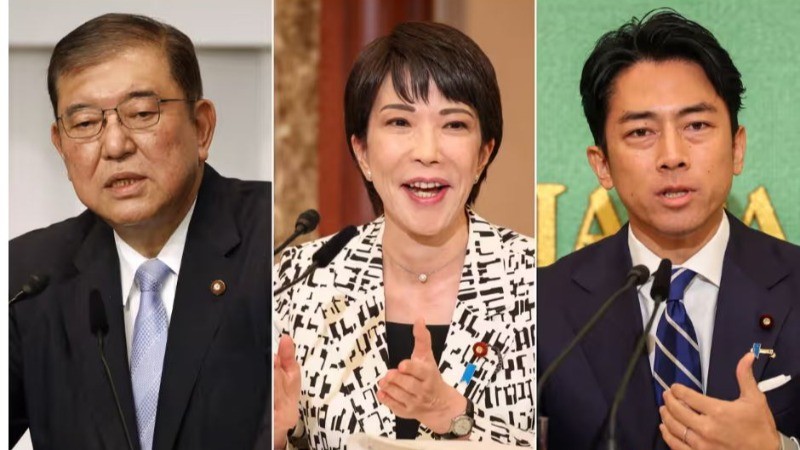
In a pivotal moment for Japan, three prominent politicians - Shigeru Ishiba, Sanae Takaichi and Shinji Koizumi - are set to compete in the final round of a leadership vote to determine the next Prime Minister. Out of, former Defence Minister Shigeru Ishiba and nationalist Sanae Takaichi, a trailblazer as Japan's first potential female prime minister, will face off on Friday, September 27.
The voting will take place among members of the Liberal Democratic Party (LDP), who must choose between Ishiba, known for his defence expertise, and Takaichi, a leading woman in Japanese politics. Both candidates will need to address pressing regional security challenges, including a more assertive China, its growing alliance with Russia, and North Korea's missile tests.
Additionally, the new leader will need to stimulate Japan's economy as the central bank shifts away from long-standing monetary easing policies that have devalued the yen.
Ishiba’s Political Experience
Ishiba, 67, has previously sought the top position, notably losing to Shinzo Abe in 2012. His background as a military enthusiast and his experience with complex social issues, including agricultural reforms, bolster his candidacy. With public dissatisfaction towards the LDP fueled by scandals, many see Ishiba as a candidate who embodies a “fair and square” approach, according to Yu Uchiyama, a political professor at the University of Tokyo.
Takaichi's Nationalist Stance
On the other hand, Takaichi, 63, who served under Abe, holds a firm stance against legislative changes that would allow married couples to have separate surnames. She frequently visits the Yasukuni Shrine, which is controversial due to its historical implications for Japan's relations with South Korea and China. Recently, she expressed her views on China's actions, emphasizing Japan's need to adopt a stronger diplomatic posture.
Naofumi Fujimura, a law professor at Kobe University, noted that while Takaichi currently relies on support from the LDP's right-wing factions, she could adopt a more centrist and pragmatic approach if elected as prime minister.
Leadership Dynamics in the LDP
The first round of voting saw a record nine candidates, following the disbanding of powerful LDP factions over a funding scandal earlier this year. Since the conservative party holds a parliamentary majority, the victor of this vote is almost guaranteed to become prime minister and may call for a snap election to solidify their position.
On the streets of Tokyo, retiree Yasumi Fujino expressed her concerns about China, hoping the new leader would prioritize diplomacy. However, she shared her reservations about Takaichi, describing her as an ardent supporter of former Prime Minister Abe.
LDP presidents serve a three-year term and can be re-elected for two additional terms. Current Prime Minister Fumio Kishida, who has faced significant unpopularity, is not running for re-election.
Ishiba and Takaichi lead the pack, with former Environment Minister Shinjiro Koizumi, the son of a former prime minister, coming in third but facing criticism over his perceived inexperience.
The winner of this leadership contest will be formally elected by parliament on October 1, shaping the future of Japan's governance. The LDP has maintained a dominant position in Japanese politics for decades, often overshadowing opposition parties that struggle to present themselves as viable alternatives.
During Kishida's tenure, significant initiatives were launched, including plans to double Japan’s defence spending and enhance military ties amid ongoing regional tensions. However, his administration was marred by scandals and rising public frustration over increasing prices.